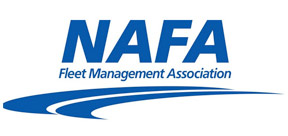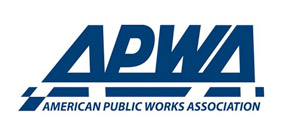Fort Wayne, Ind., pioneers electric vehicle infrastructure

The city of Fort Wayne, Ind., has taken bold steps towards a more sustainable future by adopting electric vehicle infrastructure as a core component of its urban development strategy. Starting in 2020, the city installed EV charging stations across multiple locations. This initiative aims to support residents, attract businesses and empower a more eco-conscious community.
According to the city of Fort Wayne’s Director of Public Works Shan Gunawardena, a $90,000 grant from the Indiana Department of Environmental Management — through funds tied to Volkswagen’s emissions violation settlement — bolstered the city’s EV infrastructure expansion. These funds are earmarked to support projects that reduce environmental impact, such as fleet electrification and EV charging stations.
“While the monetary value of the grant was modest, the goal was to raise visibility and make a significant regional impact,” Gunawardena said.

The grant allowed Fort Wayne to install EV chargers at 10 heavily trafficked locations, including city parks, libraries and retail centers. This first phase led to the deployment of 27 chargers, with an additional 10 units installed later at five new locations. The nonprofit Greater Indiana Clean Cities Inc. coordinated with the city to identify potential charging sites, assess identified site needs and write the city’s grant application.
Per Gunawardena, with the nonprofit’s consultation, the city strategically selected locations near major highways and high-traffic zones to ensure accessibility for residents and visitors alike. These chargers provide up to 50 miles of range in two hours, making them perfect for short stops at shopping malls, movie theaters and grocery stores.
“The placement ensures that EV owners can seamlessly incorporate charging into their daily activities,” Gunawardena said. “We’re not trying to change how people live or mandate electric vehicle use; we’re just creating an environment where those who drive EVs can easily charge them.”
The city’s standard rate is $0.30 per kWh (kilowatt hour), with a max of $20 per charging session. Some stations apply additional fees after two, four or eight hours to encourage drivers to move their vehicles once charging is complete.
Speaking of drivers, in 2022, Indiana had 108,888 registered EV and gas hybrid vehicles. This number represented 1.68 % of total registered vehicles. The state reported 15,949 all-electric vehicles, or 0.25% of total registered vehicles. Between 2018 and 2023, Allen County had the third-largest number of registered electric and gas hybrid vehicles in Indiana, trailing behind Marion and Hamilton counties. Between 2018 and 2023, Allen County saw an increase from 0.05% to 0.35%.
So far, the results related to EV charger usage have been promising. An increase in demand has not only validated the city’s investment but also inspired local businesses to install their own EV chargers.
“We’ve seen the private sector follow suit, which strengthens the overall infrastructure and encourages green mobility across Fort Wayne,” Gunawardena said.
Since implementation, the EV stations have prevented 43 tons of CO2 emissions, saved 4,400 gallons of gasoline and reduced the consumption of 94 barrels of oil, according to the city’s website. Gunawardena contends that this not only highlights the city’s commitment to environmental stewardship but also sends a clear message that the northeast Indiana city is ready to welcome new residents and businesses who prioritize sustainability.
However, Gunawardena is quick to point out that the city is not in the business of influencing public opinion or even changing behavior. It’s simply making a resource available for those who have a need.
“People will use it if it’s convenient, but it’s not about dictating policy,” he said. “We aim to support the growing demands of EV users and remove infrastructure barriers.”
The EV initiative is just one way the city is forward-thinking. Gunawardena said Fort Wayne’s public works department is also rethinking urban spaces holistically, integrating green infrastructure and public art into road projects to improve quality of life. Specifically, that means adding landscaping, trails and rainwater infiltration systems to combat flooding in a community situated on the confluence of three rivers.
“We’ve shifted from simply paving roads to creating spaces that people want to live, work and invest in,” Gunawardena said.
In the larger context, Gunawardena makes the case that Fort Wayne’s progressive approach to EV infrastructure and public works highlights the potential of smart planning and sustainable practices. These efforts deliver both environmental and economic benefits.
Next Article: Dunwoody Pavement Management Program replaces all streets on 20-year cycle


